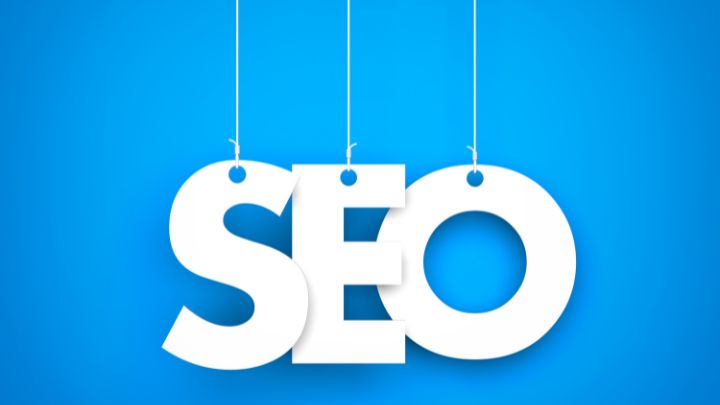Digital marketing is a broad term that encompasses all marketing efforts that use an electronic device or the internet. Businesses leverage digital channels such as search engines, social media, email, and other websites to connect with current and prospective customers. But why is it so important?
The Importance of Digital Marketing
In today’s digital age, most consumers turn to the internet first when looking for a product or service. This shift in consumer behaviour underscores the importance of digital marketing. It’s not just a trendy buzzword but an integral part of any successful business strategy.
What is the Importance of a Digital Marketing Strategy?
A digital marketing strategy is more than just a plan; it’s a roadmap to your business’s online success. It outlines where you want to go and how to get there. But why is it so important? Here are three key reasons:
Clear Direction and Goals
With a digital marketing strategy, your digital marketing efforts can become cohesive and effective. A well-defined strategy provides clear direction and goals. It outlines what you want to achieve (e.g., increase website traffic, improve conversion rates, boost brand awareness) and how you plan to do it. This clarity helps ensure all your digital marketing efforts align and work towards the same objectives.
Understanding Your Audience

A digital marketing strategy helps you better understand your audience. It involves researching your target market, creating buyer personas, and understanding your customers’ needs and behaviours. This understanding allows you to create more targeted and effective marketing campaigns. Instead of trying to reach everyone, you can focus on reaching the right people with the right message at the right time.
Measurable Results
One of the most significant advantages of digital marketing is that it’s measurable. With a digital marketing strategy, you can track your efforts and see exactly what’s working and what’s not. This allows you to adjust your strategy as needed and make data-driven decisions. Without a strategy, you’re flying blind, making it difficult to measure success or identify areas for improvement.
Key Components of Digital Marketing
Digital marketing is made up of several key components, including SEO, content marketing, social media marketing, and email marketing. Each plays a crucial role in helping businesses reach their target audience online.
Building a Digital Marketing Strategy
Creating a successful digital marketing strategy is like constructing a building; it requires a solid foundation, careful planning, and ongoing maintenance.
Understanding Your Target Audience
Understanding your target audience is the first step in building a digital marketing strategy. Who are they? What are their interests and needs? The more you know about your audience, the more effectively you can reach them through your marketing efforts.
Setting Clear Marketing Goals
Once you understand your audience, it’s time to set clear marketing goals. These should align with your business objectives and provide a clear direction for your digital marketing efforts.
Choosing the Right Digital Marketing Channels
In the vast digital landscape, numerous channels are available for businesses to reach their target audience. However, only some channels will be suitable or effective for some businesses.
Selecting the right digital marketing channels that align with your business goals, resonate with your target audience, and provide the best return on investment is crucial. Let’s delve deeper into some of these channels:
SEO (Search Engine Optimisation)
Search Engine Optimisation, or SEO, is a fundamental digital marketing channel. It involves optimising your website and its content to rank higher on Search Engine Results Pages (SERPs). The goal is to increase organic (non-paid) traffic to your site from search engines like Google or Bing.

SEO involves various techniques, including:
- Keyword Research: This involves identifying potential customers’ words and phrases when searching for products or services like yours. These keywords should be incorporated naturally into your website content to help search engines understand what your site is about and match it to relevant search queries.
- On-Page SEO: This refers to optimising individual pages on your website. This can involve producing high-quality content around your keywords, optimising page titles and meta descriptions, and ensuring your website has a logical structure that makes it easy for search engines to crawl.
- Off-Page SEO: This involves activities that happen away from your website but can affect your ranking on SERPs. This primarily includes building high-quality backlinks from other websites, which can help increase your site’s authority.
Content Marketing
Content marketing is a strategic approach focused on creating and distributing valuable, relevant, consistent content to attract and retain a clearly defined audience. The ultimate goal is to drive profitable customer action.
Content can come in various forms, such as blog posts, videos, infographics, ebooks, podcasts, webinars, and more. The key to successful content marketing is providing value to your audience. This could be in the form of entertaining content, informative content, or content that solves a problem.
A successful content marketing strategy will attract and engage your audience and establish your brand as an authority in your industry, build trust with your audience, and improve your SEO by providing fresh, relevant content for search engines to index.
Social Media Marketing
Social Media Marketing involves promoting your content and engaging with your audience on social media platforms like Facebook, Instagram, Twitter, LinkedIn, Pinterest, and more. It’s a powerful way for businesses of all sizes to reach their customers directly and build a community around their brand.

Social media marketing can involve a range of activities, including:
- Posting regular updates: This could be sharing blog posts, news, videos, or simply thoughts and inspiration. The aim is to engage your audience and encourage them to interact with your posts.
- Social advertising: Most social media platforms offer powerful targeted advertising options to help you reach a wider audience beyond your existing followers.
- Community management: This involves responding to comments and messages, encouraging discussion, and creating a two-way conversation with your audience.
Email Marketing
Email marketing is a form of direct marketing that uses email to promote products or services. It’s a way to reach your customers directly in their inboxes, providing them with information and offers that are relevant to them.
Key aspects of email marketing include:
- Building an email list: This involves collecting email addresses from people visiting your website or engaging with your brand. This could be through a sign-up form on your website, at the point of sale, or through a lead magnet (a piece of valuable content offered in exchange for contact details).
- Creating engaging content: This could be a regular newsletter, promotional offers, or updates about your products or services. The key is to provide value to your subscribers and encourage them to open and engage with your emails.
- Segmentation and personalisation: Only some of your subscribers will be interested in the same content. By segmenting your email list, you can send targeted emails more likely to resonate with different groups. Personalisation, such as including the recipient’s name in the email, can also improve engagement.
- Analysis and optimisation: Most email marketing tools provide analytics that lets you see how many people are opening your emails, clicking links, and making purchases. You can use this data to optimise your emails and improve their performance.
Each digital marketing channel has its strengths and can be effective depending on your specific business goals and target audience. Brands that combine these channels will often be part of a comprehensive digital marketing strategy.
For instance, SEO and content marketing often go hand-in-hand, as creating high-quality content can improve your SEO. Similarly, businesses use social media marketing to promote content and drive traffic to their website.
Remember, the key to choosing the right digital marketing channels is understanding your audience, your goals, and the strengths and weaknesses of each channel. By aligning these elements, you can create a digital marketing strategy that effectively reaches your target audience and achieves your business goals.
Creating a Digital Marketing Strategy
Creating a digital marketing strategy can seem daunting, but it doesn’t have to be. By following a systematic approach, you can create a strategy that aligns with your business goals and effectively reaches your target audience. Here’s a step-by-step guide on how to create a digital marketing strategy.
Understanding Your Buyer Personas
Understanding your buyer personas is the first step in creating a digital marketing strategy. A buyer persona is a semi-fictional representation of your ideal customer based on market research and accurate data about your existing customers.
When creating your buyer personas, consider including customer demographics, behaviour patterns, motivations, and goals. The more detailed you are, the better you’ll understand who you’re trying to reach and how to engage them.
Identifying Your Goals
Next, you need to identify your goals. What do you want to achieve with your digital marketing strategy? Your goals should align with the broader objectives of your business.
For instance, if your business’s primary goal is to increase online sales by 20% over the next year, your digital marketing strategy might aim to increase website traffic and improve conversion rates. Remember to make your goals specific, measurable, achievable, relevant, and time-bound (SMART).
Evaluating Existing Digital Assets and Channels
Before creating new content and campaigns, evaluate what you already have. This includes your digital assets (like your website, blog content, social media profiles, and images) and digital channels (like your owned, earned, and paid media).
Owned media refers to the digital assets your brand or company owns, like your website and social media profiles. Earned media is the recognition you receive from these efforts, like shares and reviews. Paid media refers to any efforts where you pay to attract your target audience, like Google Ads.
Conducting an Audit and Planning Your Campaigns
Once you’ve evaluated your existing assets and channels, conducting an audit is time. This involves assessing how well your existing digital marketing works to achieve your goals.
You should analyse your website traffic, social media engagement, and conversion rates. This will help you identify what’s working, what’s not, and where there are opportunities for improvement.
Based on your audit, you can start planning your campaigns. This involves deciding what type of content you’ll create, which channels you’ll use to distribute it, and how you’ll measure success.
Choosing the Right Digital Marketing Tools
There are numerous digital marketing tools available that can help you implement and manage your strategy. These include SEO tools, social media management tools, email marketing software, and analytics tools.
The tools you choose will depend on your goals and your channels. For instance, if you’re focusing on SEO, you might use tools like Google Analytics and SEMrush. If you’re focusing on social media marketing, tools like Hootsuite and Buffer can be helpful.
Monitoring and Reporting
Once you’ve implemented your strategy, monitoring your results and making necessary adjustments is essential. This involves tracking your KPIs (Key Performance Indicators) and using analytics tools to understand your campaigns’ performance.

Regular reporting is also crucial. This involves compiling your data into a report and presenting it to your team or stakeholders. Your report should highlight your successes, challenges, and the steps you’re taking to improve.
Remember, creating a digital marketing strategy is not a one-time task. It’s an ongoing process that requires regular review and adjustment. By staying flexible and adaptable, you can ensure your strategy continues to support your business goals and engage your target audience effectively.
Example of a Digital Marketing Strategy
Let’s consider a hypothetical client, “Healthy Habits”, a new online health food store that wants to increase brand awareness and drive online sales. Here’s an example of a digital marketing strategy for Healthy Habits:

1. Understanding the Buyer’s Personas
Healthy Habits’ target audience is health-conscious consumers aged 25-45 who value organic, sustainable products. They are active on social media, particularly Instagram and Facebook, and often seek health and wellness advice online.
2. Identifying Goals
Healthy Habits’ primary goal is to increase online sales by 30% over the next six months. Secondary goals include increasing website traffic by 50% and growing their social media following by 20%.
3. Evaluating Existing Digital Assets and Channels
Healthy Habits has a well-designed website with an online store, a blog featuring healthy recipes and wellness tips, and social media profiles on Instagram and Facebook. They have yet to invest in any paid advertising.
4. Conducting an Audit and Planning Campaigns
An audit of Healthy Habits’ website shows that while they get a decent amount of traffic, their conversion rate is low. Their social media posts are well-received, but they need to drive more traffic to the website.
Healthy Habits plans to launch a series of campaigns to address these issues. These include an SEO campaign to improve their website’s visibility on search engines, a content marketing campaign featuring engaging blog posts and infographics, and a social media campaign featuring promotions and giveaways to engage their audience and drive traffic to their website.
5. Choosing the Right Digital Marketing Tools
Healthy Habits will use Google Analytics to track website traffic and conversions, SEMrush for SEO, and Hootsuite for social media management. They’ll also use MailChimp for email marketing, sending regular newsletters featuring new products, promotions, and health tips.
6. Monitoring and Reporting
Healthy Habits will monitor their KPIs (Key Performance Indicators) weekly and adjust their strategy as needed. They’ll use the data from their digital marketing tools to compile a monthly report highlighting their successes, challenges, and plans for improvement.
This strategy provides a clear direction for Healthy Habits’ digital marketing efforts, ensuring they align with their business goals and effectively target their audience. By regularly monitoring and adjusting their strategy, they can ensure their digital marketing remains effective and continues to drive business growth.
Implementing and Monitoring Your Strategy
Once you’ve chosen your digital marketing channels and set your goals, it’s time to implement your strategy. However, it’s not enough to just set it and forget it. You need to monitor and adjust your strategy based on performance constantly.
Using Analytics to Track Success
Digital marketing analytics tools can help you track your success and identify areas for improvement. These tools can provide valuable insights into your audience’s behaviour and engagement with your marketing efforts.
Adapting Your Strategy Over Time
The digital marketing landscape constantly changes, so staying up-to-date with the latest trends and adapting your strategy accordingly is essential.
Staying Up-to-Date with Digital Marketing Trends
From AI to voice search, new digital marketing trends are constantly emerging. Staying up-to-date with these trends can help you stay ahead of the competition and ensure your strategy remains effective.
The Role of AI in Digital Marketing
Artificial Intelligence (AI) is becoming increasingly important in digital marketing. From chatbots to predictive analytics, AI can help businesses improve their marketing efforts and provide a better customer experience.
Key Takeaways
In conclusion, a successful digital marketing strategy requires understanding your audience, setting clear goals, choosing the right channels, and constantly monitoring and adapting your efforts. With the right strategy, digital marketing can help you reach your target audience, engage with them effectively, and ultimately drive business growth.
FAQs
What is digital marketing?
Digital marketing is a form of marketing that uses the internet and digital technologies to promote products or services.
Why is a digital marketing strategy necessary?
A digital marketing strategy provides a clear direction for your marketing efforts and helps you reach your target audience effectively.
What are the key components of digital marketing?
The key components of digital marketing include SEO, content marketing, social media marketing, and email marketing.
How can I track the success of my digital marketing strategy?
You can use digital marketing analytics tools to track your strategy’s success and identify improvement areas.
What role does AI play in digital marketing?
AI can help improve digital marketing efforts by providing personalised experiences, predicting customer behaviour, and automating tasks.
